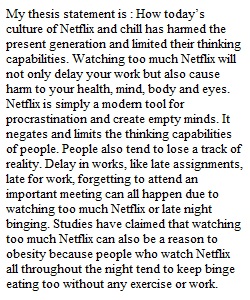


Q Annotated Bibliography Instructions: Page | 1 Part 1: Annotated Bibliography Instructions Overview Your annotated bibliography is a stepping stone between your Text Analysis Essay, where you learned to analyze one source, and your Argument Essay, where you will use the sources you found in this module to support your argument about your topic. In this assignment, you will summarize and evaluate five sources you locate through library research and then write a synthesis that demonstrates how the sources fit together. This assignment will be approximately 1000-1500 words. Follow the instructions below: 1. Review the feedback you received on the Annotated Bibliography: Annotations of 3 Sources Assignment. Determine whether you will use those three sources for this assignment, or if you need to replace any of them. 2. Locate five sources using the library resources provided in Modules 1 and 2. a. Most likely, three will be the sources you annotated for your Annotations of 3 Sources Assignment. You may need to locate some new sources, based on instructor feedback or further research. Revise entries as necessary. b. Preview and evaluate multiple sources. Narrow to five sources that are reliable, appropriate, and best represent a range of views on your topic. 3. Create a document using the Document Formatting Guidelines provided in the Introduction Module. Title the document “Annotated Bibliography: Draft Submission.” 4. Write annotations for each of your five sources. Use your Annotations of 3 Sources Assignment document as a starting point. For each source: a. Provide an MLA-style works cited entry. b. Provide a 100-300 word annotation. i. Write a summary of the source in present tense. Your summary must be accurate, fair, and in your own words. 1. Use signal phrases to indicate where you are referring to someone else’s ideas. 2. Use quotation marks around any exact words or phrases. 3. If the source has page numbers, use parenthetical citations to indicate where your readers can find summarized, paraphrased, or quoted information. ii. In another paragraph, analyze the source. Evaluate the source’s relevance and appropriateness for your topic. Explain how you plan to use the source in your argument essay. Annotated Bibliography Instructions Page | 2 5. Arrange the sources with their annotations in alphabetical order. 6. Create a “Synthesis” section header at the end of the Annotated Bibliography section. For instructions on creating section headers in Microsoft Word, see the Microsoft: Add a Heading webpage. 7. In the Synthesis section, write 2-3 paragraphs (300-500 words). To do this: a. Summarize the conversation about your topic. To do this: i. Identify the different perspectives on the topic. How do your sources represent these perspectives or viewpoints? ii. Identify whether your sources represent more than one point of view. Note: If your sources do not present more than one point of view, you may need do more research in the next module to locate additional perspectives. b. Explain how you might enter the conversation. To do this: i. Explain any gaps in your research or in the conversations that you have found. ii. Explain how you might fill in the gaps, either through further research or by contributing your own views. iii. Explain how you think you could enter a conversation about this topic. iv. State your argument or perspective about the topic you could use for the Argument Essay, based on the research you have completed. c. Reflect. To do this: i. Evaluate whether you are finding answers to your research question. Explain. ii. Evaluate whether you need to modify your question or your research as you move into writing your own argument essay. 1. If so, explain how and why. 2. If not, explain why not. 3. Optional: Write a revised research question. Part 2: Dear Reader Letter 1. Write a 100-175 word Annotated Bibliography “Dear Reader” Letter and include it on the first page of the Annotated Bibliography: Draft document, before the beginning of your Annotated Bibliography. 2. In your letter, provide a brief description of your Annotated Bibliography, including your topic and why you chose it. 3. Then, answer the following questions in paragraph form: a. Describe your process of writing this assignment. How did you approach brainstorming, researching, drafting, revising, etc.? b. What did you learn (about the work of writing, about yourself as a writer, about research) as a result of the work you did on this draft? c. What are your draft’s strengths? Annotated Bibliography Instructions Page | 3 d. What are your draft’s weaknesses? e. What questions or concerns do you want your readers to address as they review your paper?
View Related Questions